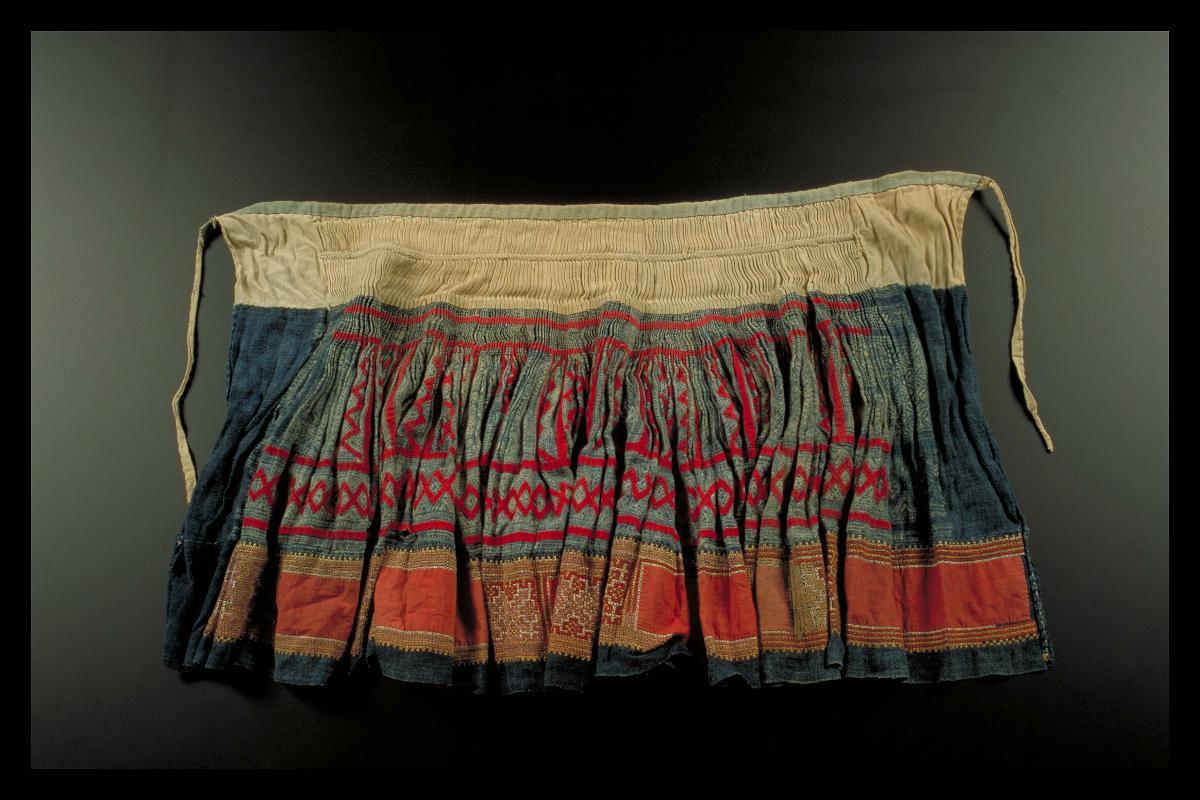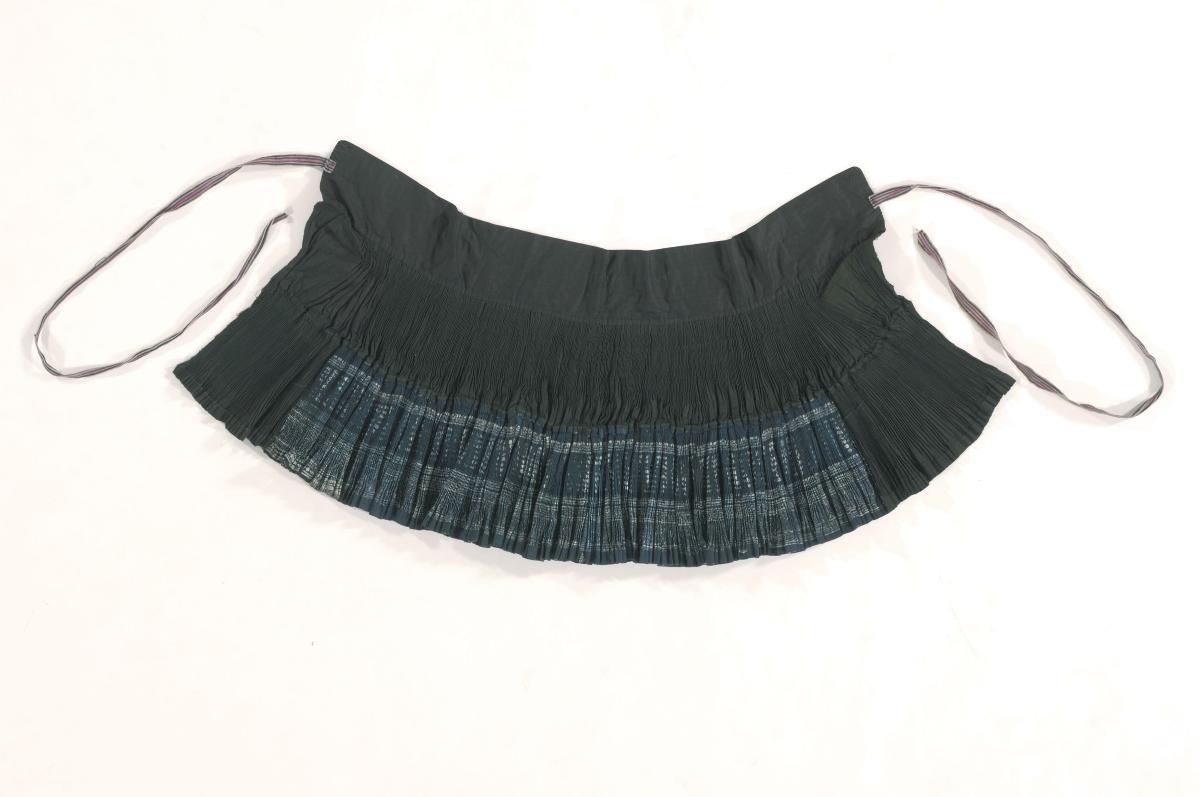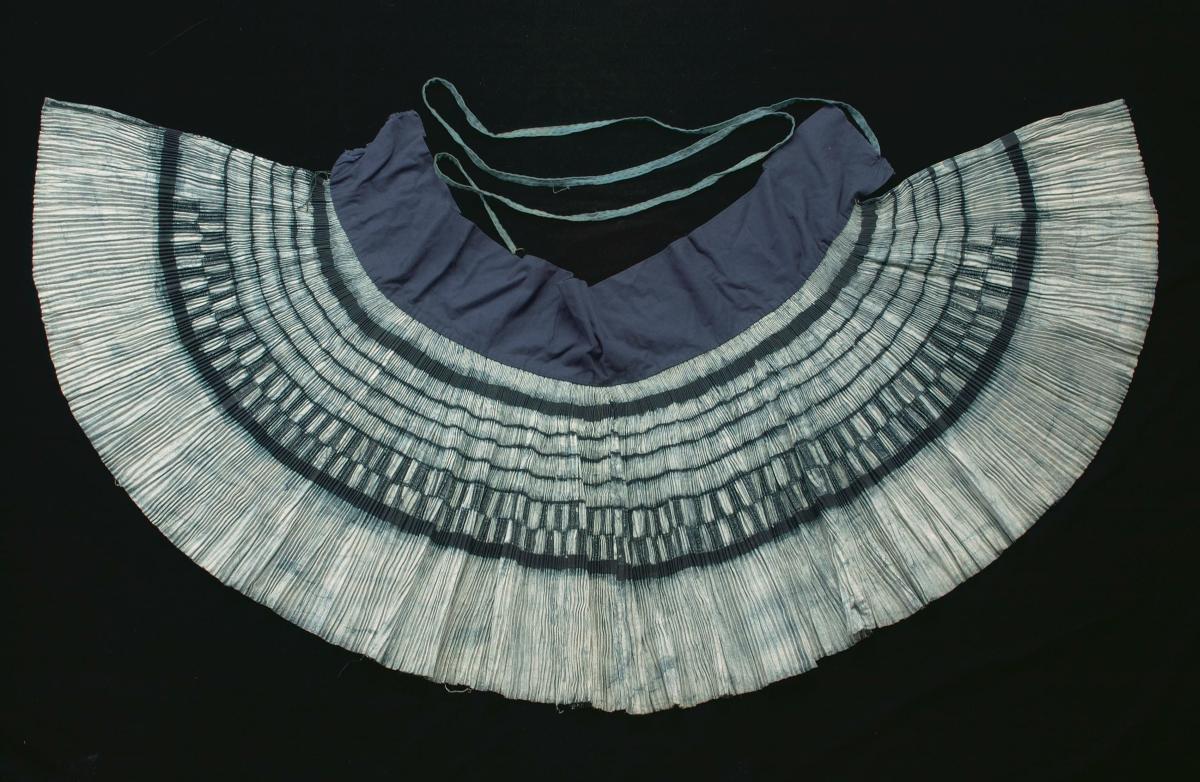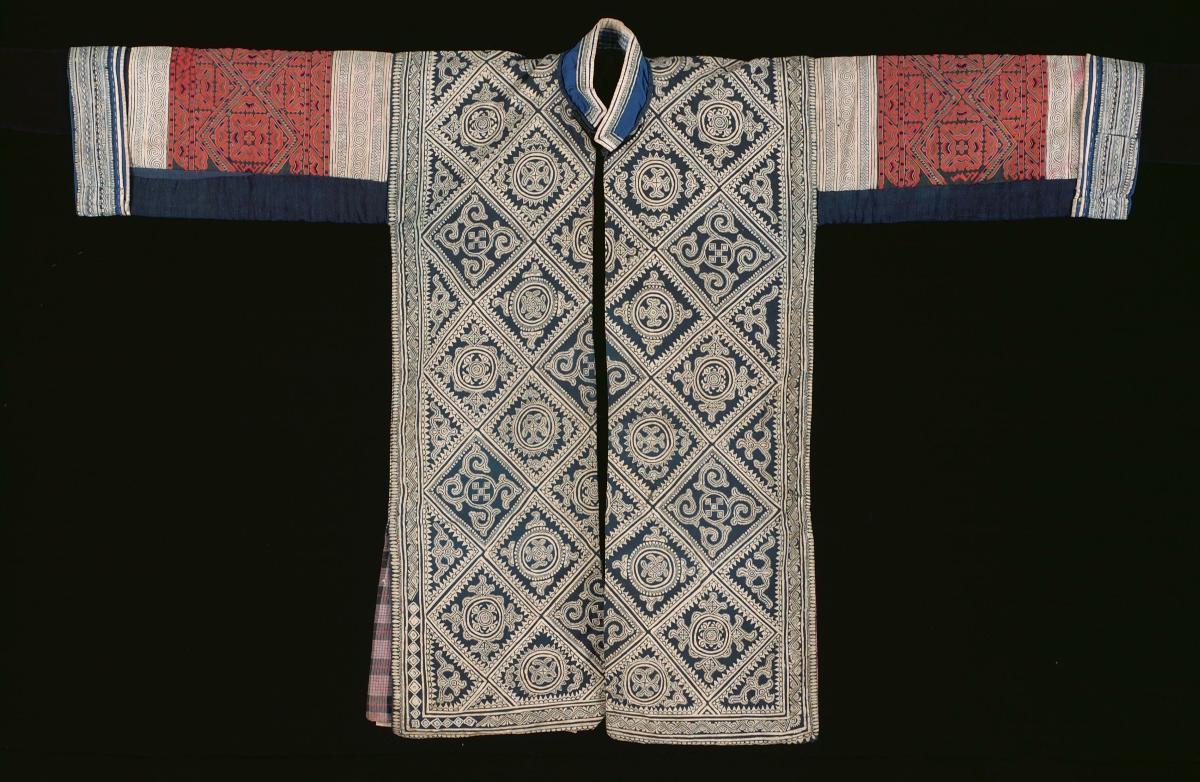Colourful hemp clothing and accessories are an important part of the female Hmong cultural identity. They wear knee-length, colourful hemp skirts such as this example. The skirts have geometric patterns in two sections - the upper in indigo and white produced by batik or wax resist technique with appliqué red cotton designs added on top. While the lower half has embroidered designs with squares of pink cloth appliquéd on top. A strip of plain cloth is attached to the top of the batik panel.For the Hmong, hemp is an important element in the transmission of traditional knowledge. It signifies the link with the ancestors, where daughters would learn from their mothers from an early age to process and weave hemp garments. Skirts were worn during weddings and funerals.Hmong designs are geometric and abstract. The variery of cross and motifs in various configurations probably served as protection against evil spirits.The Hmong were originally highlanders from southern China. From about the late 19th to the beginning of the 20th century, due to economic, political and environmental factors, they were forced to move southwards into mainland Southeast Asia.















